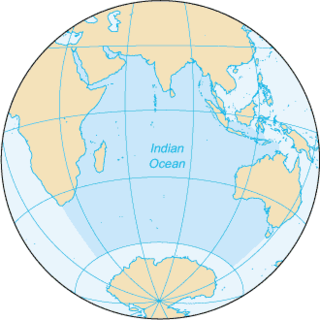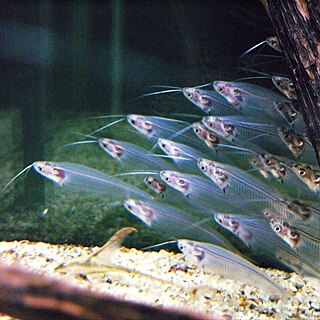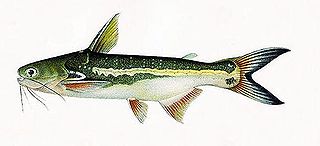| Plicofollis | |
|---|---|
 | |
| Plicofollis dussumieri | |
| Scientific classification | |
| Kingdom: | Animalia |
| Phylum: | Chordata |
| Class: | Actinopterygii |
| Order: | Siluriformes |
| Family: | Ariidae |
| Subfamily: | Ariinae |
| Genus: | Plicofollis Kailola, 2004 |
| Type species | |
| Arius argyropleuron Valenciennes, 1840 | |
Plicofollis is a genus of sea catfishes found along the coasts of the Indian Ocean from Africa to Australasia with some species ranging up into the Philippines. They occur in marine, brackish and fresh waters. There are currently eight described species in this genus.

The Indian Ocean is the third largest of the world's oceanic divisions, covering 70,560,000 km2 (27,240,000 sq mi). It is bounded by Asia on the north, on the west by Africa, on the east by Australia, and on the south by the Southern Ocean or, depending on definition, by Antarctica.

Africa is the world's second largest and second most-populous continent, being behind Asia in both categories. At about 30.3 million km2 including adjacent islands, it covers 6% of Earth's total surface area and 20% of its land area. With 1.2 billion people as of 2016, it accounts for about 16% of the world's human population. The continent is surrounded by the Mediterranean Sea to the north, the Isthmus of Suez and the Red Sea to the northeast, the Indian Ocean to the southeast and the Atlantic Ocean to the west. The continent includes Madagascar and various archipelagos. It contains 54 fully recognised sovereign states (countries), nine territories and two de facto independent states with limited or no recognition. The majority of the continent and its countries are in the Northern Hemisphere, with a substantial portion and number of countries in the Southern Hemisphere.

Australasia comprises Australia, New Zealand, and some neighbouring islands. It is used in a number of different contexts including geopolitically, physiogeographically, and ecologically where the term covers several slightly different but related regions.
















